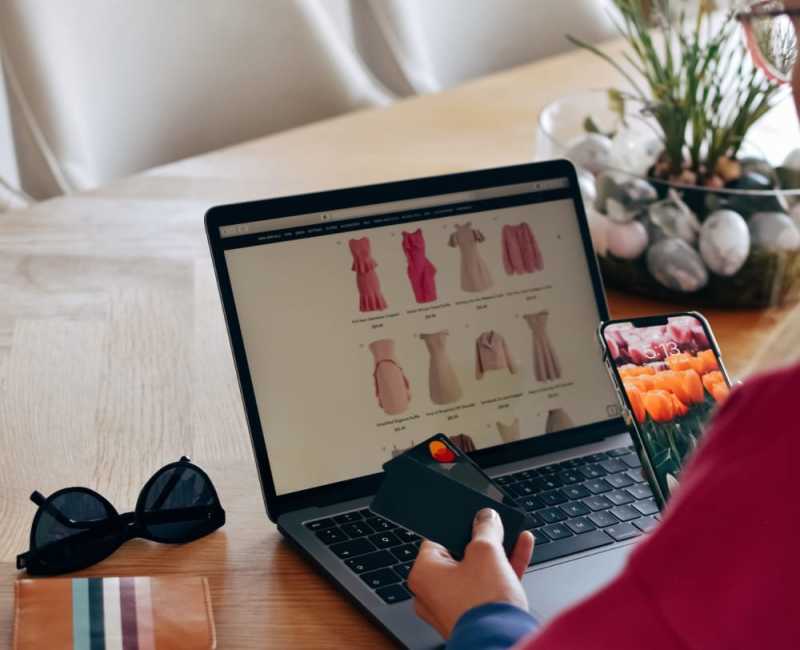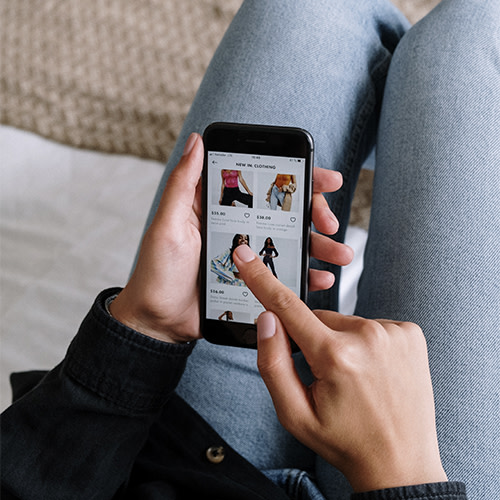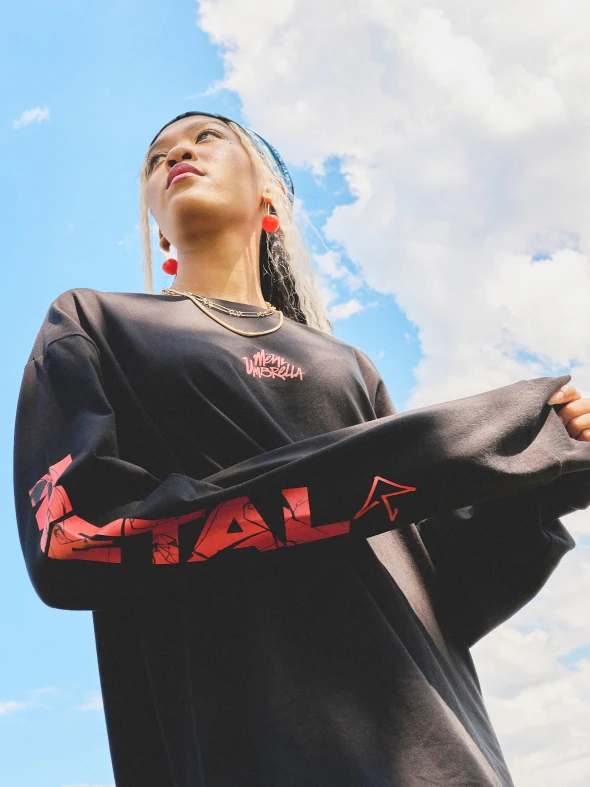7 Web Designs that are Shaping the E-Commerce Landscape

Quick Summary From bold minimalism to AI-generated visuals, 2025’s leading web design trends prioritize clarity, creativity, and brand integrity. This year is less about visual noise and more about intentional, expressive design—where every detail serves a purpose and every interaction deepens the user experience.
Web design in 2025 is driven by a sharper focus on clarity, performance, and personalization. As user expectations rise and digital touchpoints multiply, design is becoming more intentional—less about visual novelty, more about utility and impact. Brands are rethinking how they show up online, emphasizing accessibility, speed, and storytelling to create experiences that feel both seamless and meaningful.
This year’s leading trends reflect a shift toward design systems that adapt, communicate, and convert with greater precision. Here's what’s shaping the next wave of digital experiences.
1. Micro-Interactions

Design excellence isn’t defined by how a site looks, but by how it behaves. Micro-interactions—those subtle cues like a button ripple, a hover shift, or a loading flicker—are what give interfaces a sense of rhythm, responsiveness, and precision.
Apart from visual appeal, these moments serve a functional purpose: they signal that the system is listening, reacting, and guiding. They reinforce user actions, reduce uncertainty, and help shape a more intuitive flow through the experience.
2. Retro Aesthetics

Retro design is making a bold comeback, blending nostalgia with a modern twist. Instead of simply replicating the past, this trend reinvents it with bold colors, distorted visuals, and pixelated details that feel both familiar and unexpected. In contrast to the clean, hyper-polished aesthetics dominating digital spaces, retro-inspired design embraces rough edges, quirky distortions, and an almost DIY feel that adds character.
By incorporating handcrafted elements and playful imperfections, retro aesthetics signal rebellion against over-polished sameness. They create friction, spark curiosity, and tap into emotional memory. When used with restraint, they give brands an edge: familiar, but unexpected. Designed like the past, optimized for the now.
3. Immersive 3D

Immersive 3D is redefining digital experiences, turning flat interfaces into dynamic, interactive environments. Whether it’s a product rendered in full rotation or a virtual showroom users can explore, 3D design makes content feel tangible and engaging. It bridges the gap between the digital and physical worlds, offering depth, realism, and a sense of presence that static visuals simply can’t achieve.
When used with purpose, immersive 3D makes a digital experience feel tactile—like something you can step into, not just scroll past. It’s particularly powerful in sectors like fashion, architecture, luxury goods, and tech, where product form and atmosphere matter as much as function.
4. Scrapbook Inspired

In a sea of grids and precision, some designers are choosing controlled chaos. Scrapbook-inspired design pulls from zines, analog collage, and early internet DIY aesthetics—think overlapping layers, torn edges, mismatched fonts, hand-drawn notes, and raw textures. It’s messy on purpose.
But beneath the disorder is intention. This visual language breaks hierarchy, bends rules, and creates emotional texture. It invites the viewer to slow down, explore, and connect—not just consume. For brands rooted in youth culture, fashion, or subversive storytelling, this aesthetic offers something rare: imperfection as identity.
Access curated insights from top industry leaders to help you sharpen your commerce strategy in 2025.
5. Bold Minimalism

Minimalism in 2025 isn’t just about what’s removed—it’s about what’s left behind, and how confidently it holds the space. The new wave of bold minimalism rejects neutrality in favor of presence. It blends clarity with character: oversized typography, high-contrast color palettes, deliberate white space, and a strict visual hierarchy that leads the user without handholding.
This is minimalism with an opinion.
The best examples are from brands that don’t rely on decorative visuals to speak—they let structure, whitespace, and content do the talking.
CELINE sets the standard: its site is black and white, image-led, and almost severe in its simplicity. No gradients. No soft transitions. Just stark layouts, rigid grids, and crisp product photography. Austerity is the identity—it reflects the brand’s Parisian edge and editorial tone.
Acne Studios and Totême also offer standout minimalist designs. Acne's site has a bold, almost brutalist minimalism—oversized fonts, modular layouts, and direct interactions. Totême, by contrast, uses muted palettes and slow, intentional transitions to support a feeling of effortlessness.
What unites these examples is intention. Bold minimalism doesn’t mean doing less for the sake of simplicity—it means designing exactly enough. It allows for breathing room without sacrificing impact. It’s a deliberate, strategic choice that says: we’re not here to entertain you with fluff. We’re here to show you exactly what matters.
6. AI-Generated Visuals

AI is not replacing creativity—it’s reshaping its boundaries. In 2025, generative tools are redefining how visual content is imagined, produced, and deployed. Designers are no longer confined by time, budget, or medium in the same way. Instead of starting from scratch, they start with a surge of options—AI-generated iterations that open doors to unexpected directions, allowing intuition and refinement to lead from there.
By automating the mechanical—asset resizing, background generation, concept variations—AI frees up space for more meaningful work: refining the emotional tone of a campaign, experimenting with abstract ideas, and shaping visual narratives with greater depth and dimension.
Crucially, this isn’t about replacing human input. The most resonant design still comes from human judgment—taste, restraint, culture, storytelling. AI isn’t the artist—it’s the amplifier. A collaborator that doesn’t dictate the outcome, but accelerates the path to it.
In the context of web design, this unlocks a new kind of creative agility. Brands can test campaign visuals in real time, personalize content without compromising craft, and explore entirely new visual languages.
7. Dark Themes

Dark mode has officially outgrown its trend status. In 2025, it’s a design standard—favored not just for its sleek aesthetic, but for its functional benefits. From reducing eye strain to improving perceived contrast, dark themes offer a more comfortable and immersive browsing experience.
But the best executions go beyond toggling color schemes. Brands are using dark UI as a storytelling device—conveying luxury, mood, and digital sophistication. Sites like Balenciaga, Tesla, and Aesop leverage dark palettes not just for visual impact, but to anchor their identity in a space that feels cinematic, focused, and high-end.
Done right, dark design feels less like a setting and more like a statement. Typography pops. Imagery glows. Interactions feel more deliberate. It slows the scroll and sharpens the experience, drawing users into a space that feels curated and controlled.

Design trends come and go. But great digital experiences are rooted in something deeper: a clear, consistent sense of brand. At Avex, we adopt what elevates, refine what distracts, and always return to the brand at the center. Our creative work is built to flex with the times while staying grounded in who you are.
We help Shopify brands redesign with intention—merging cutting-edge design with a clear sense of identity.



